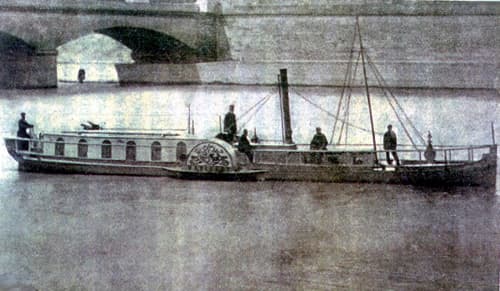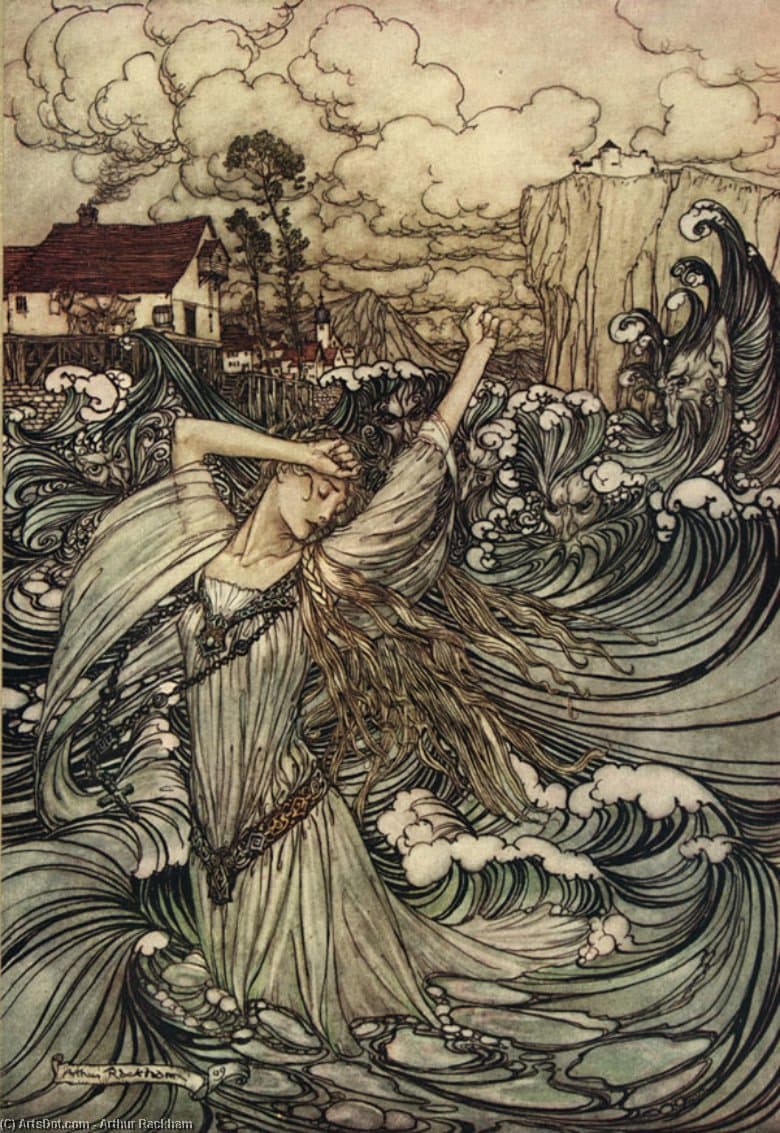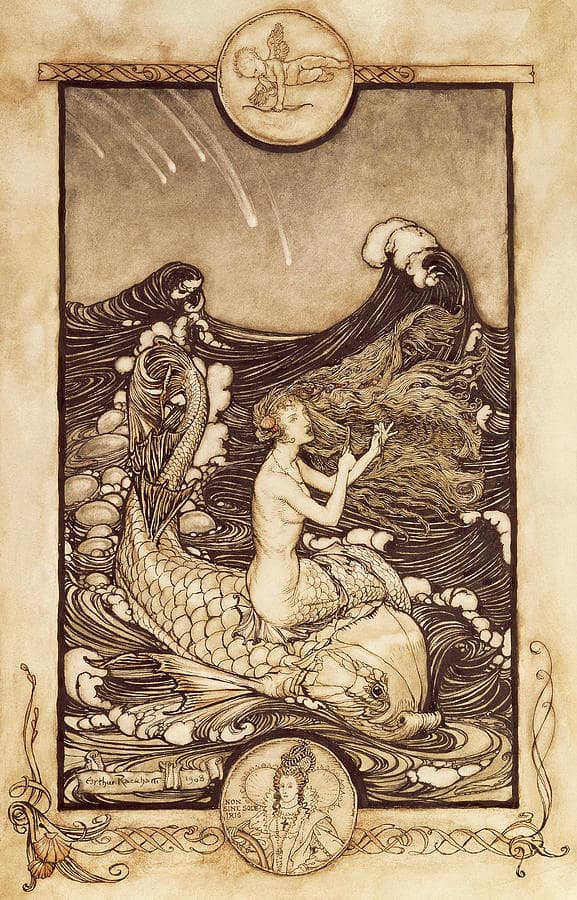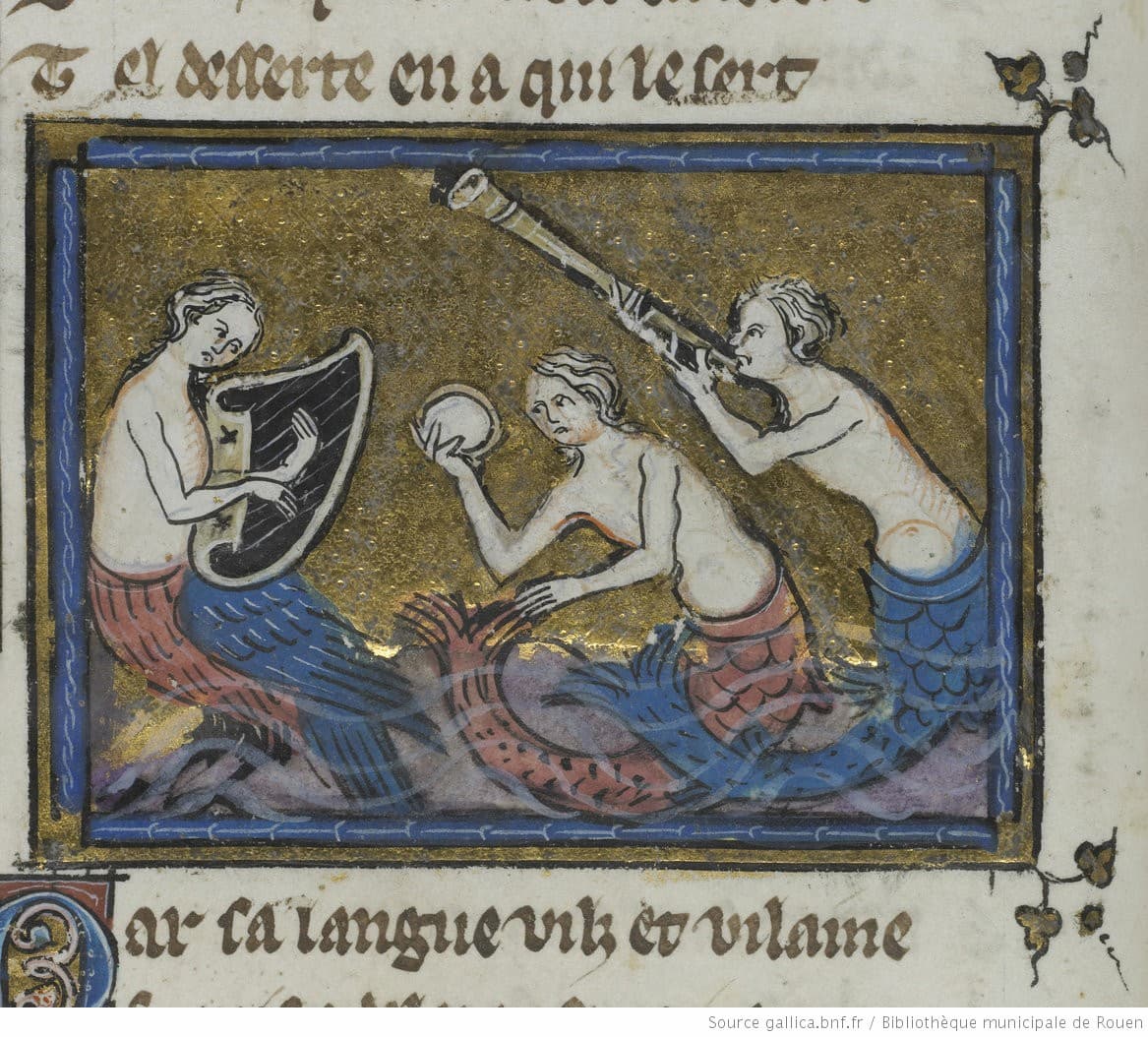Mermaids are women of the sea: half female with a scaled fishy tail. Sirens, in a word, are evil mermaids. Mermaids want good and sirens want evil. Now how have composers dealt with them?
Kit Turnbull: 3 Cautionary Tales
British composer Kit Turnbull (b. 1969) used the story of the Mermaid’s Pool as one of his Three Cautionary Tales, where young women who had drowned come back to lure passers-by to join them in their pool of death.
Kit Turnbull: 3 Cautionary Tales – II. The Mermaid’s Pool (Linda Merrick, clarinet; Navarra Quartet)
Ödön Széchényi: Hableány polka (Mermaid Polka)
Ödön SzéchényI (1839–1922) had a Danube steamship that he named The Mermaid and used it in 1867 to travel from Pest to the Paris Exposition exclusively by fresh-water canals, winning a gold medal in Paris. His paddlewheel luxury river steamer took 43 days to make the trip, a trip not without dangers. In Vienna, it had to go to the shipyard for repairs, and there was an engine failure in Frankfurt. Upon arrival in Paris they were greeted by Jules Verne followed by Napoléon III and his wife, the Empress Eugenie of France. After the exhibition, the steamship remained in Paris and was bought by the photographer Nadar. She sank in the Rhine in 1874.

Szechenyi’s Mermaid arriving in Paris
The Mermaid Polka was written by Széchényi in honour of his ship, joining other water-related pieces in his portfolio.
Ödön Széchényi: Hableány polka (Mermaid Polka) (István Kassai, piano)
Alexander Zemlinsky: Die Seejungfrau (The Mermaid)
Alexander Zemlinsky (1871–1942) took up the story of the Little Mermaid and made it into a symphonic poem. Although now the work is highly regarded, at the time, Zemlinsky withdrew the score after only 3 performances (In Vienna, Berlin, and Prague). It had its premiere on 25 January 1905 on a bill with his student Arnold Schoenberg’s Pelleas und Melisande. Zemlinsky’s work was praised and Schoenberg’s reviled.
After he withdrew it from circulation, Zemlinsky gave the first movement to a friend in Vienna, Marie Pappenheim, and took the other two movements with him to the US when he left in 1938. The parts were only reunited 50 years later.
Zemlinsky outlined his plan in a letter to Schoenberg:
Part I a: At the foot of the sea (entire exposition) b: Mermaid in the human world, storm, the prince’s rescue. \ Part II a: The mermaid’s longing; with the witch. b: The prince’s wedding and the mermaid’s demise. Thus two parts, but four sections.
Two parts, four sections, but three movements, show Zemlinsky turning toward a more traditional symphonic idea. With its storm opening, it’s not unlike Debussy’s ode to the sea, La Mer.

Rackham: The Little Mermaid
Alexander Zemlinsky: Die Seejungfrau (The Mermaid) – I. Sehr mäßig bewegt (Netherlands Philharmonic Orchestra; Marc Albrecht, cond.)
Eugen d’Albert: Seejungfraulein (Little Mermaid), Op. 15
Eugen d’Albert’s Das Seejungfräulein (The Mermaid) also takes its story from H.C. Andersen’s fairy tale, but in this one, when the prince marries someone else, she’s turned into a bird. D’Albert wrote the work for his third wife, the singer Hermine Finck, while on a summer holiday in Bavaria (and while he was still under the influence of Wagner!).

Rackham: Mermaid And Dolphin From A Midsummer Nights Dream, 1908
Eugen d’Albert: Seejungfraulein (Little Mermaid), Op. 15 (Viktorija Kaminskaite, soprano; Leipzig MDR Symphony Orchestra; Jun Märkl, cond.)
Niels Gade: Havfruesang (Mermaid Song)
Niels Gade’s venture into Andersen-land came with his choral work on Andersen’s text, Havfruesang (Mermaid Song). In this song, the mermaid describes the beauty of life under the sea: ‘There is a castle, its wall and roof are green waves….no storm reaches down here, it is only heard as organ notes’.

Ovid: Sirènes jouant de la musique, 1325 (Gallica: ark:/12148/btv1b100502162)
Niels Gade: Havfruesang (Mermaid Song) (Musica Ficta; Bo Holten, cond.)
Eric Moe: Siren Songs
Eric Moe (b. 1954) chose six texts about mermaids, from Homer, as they entice Odysseus; from Dante, as he encounters one in Purgatorio; Kafka telling us the sirens didn’t mean any harm, they were lamenting and their laments sounded so beautiful; a description of a mermaid encountered in the 1622 in Newfoundland, Canada; and pieces by a modern poet, who equated a girl scales fish with the lost mermaid she must be.
Eric Moe: Siren Songs – No. 1. The Lost Mermaid (Elizabeth Farnum, soprano; Eric Moe, piano)
Eric Moe: Siren Songs – No. 2, The Sirens (Elizabeth Farnum, soprano; Eric Moe, piano)
There are many more mermaid songs, some of her as a sea creature and some of her as a fresh-water being, named Lorelei or Undine, or Mélusine, or Rusalka, or something else from the folk talks of the world, They never seem to have happy lives despite their undersea world.
For more of the best in classical music, sign up for our E-Newsletter

